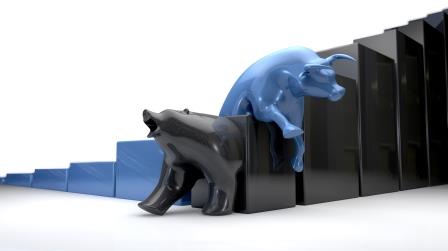 Executive editor’s Note:
Executive editor’s Note:
We are in a bull market. And this bull market has been climbing many walls of worry. With Nifty around 11500, and valuations at high levels, the market is again staring at some formidable walls of worry. Will the market climb these walls of worry too? Only time can tell. But the walls are, indeed, menacing.
A major worry for the economy is the steady depreciation in the rupee this year. After stability for 3 years, the INR has depreciated by around 12 percent this year till mid September. Even though rupee depreciation makes headline news, it is not a disaster as many commentators make it out to be. Of course, if the CAD (Current Account Deficit) widens beyond safe limits, and the currency goes for a free fall, that could be problematic. But so long as the CAD is in safe limits and inflation is within the RBI’s comfort zone, there is no need to panic. Currency depreciation has many benefits: it is a self-correcting mechanism that promotes exports and compresses imports thereby correcting the CAD over time. Also, by boosting remittances, depreciation corrects CAD imbalances. From the market perspective, depreciation is very good for exporters, particularly IT and pharma. The real negative impact will be on companies with unhedged foreign debt denominated in dollars. In brief, it is important to appreciate the fact that rupee is not fragile; but it is vulnerable to external shocks.
Perhaps, the more formidable wall of worry is posed by the ongoing trade skirmishes, which might aggravate into a full-blown trade war. Emboldened by his victory in renegotiating NAFTA, President Trump has taken the trade war into the Chinese territory by imposing 10 percent tariff on 5000 Chinese goods valued at around $ 200 billion. The outcome of this trade skirmish is hard to predict. If the skirmishes degenerate into a full-fledged trade war, it can impact international trade, global growth and, of course, stock markets globally. The impact will be less on India since India is a domestic consumption story. But, if the global markets sell off following a trade war, India too will be impacted since the valuations are not cheap, even after the recent correction.
The recent unexpected debt market issues arising from the IL&FS default, discussed elsewhere in this issue, rattled the equity markets with the NBFC stocks and mid-and small-caps bearing the brunt of selling. Investors should wait for the market to stabilize.
The Indian economy is doing well in spite of the currency woes. August CPI inflation has come at 3.96 percent, well within the RBI’s and MPC’s comfort zone. Exports have grown by 14.3 percent and 19.2 percent in July and August respectively, indicating a clear uptrend, which is likely to be sustained by the INR depreciation. In the fire fighting measures announced by the government to stem the rupee slide, the government has reiterated its commitment at fiscal consolidation. This is good news.
Posted: October 2018









